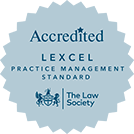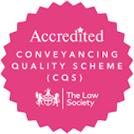
The Equality Act 2010 states that an impairment is to be treated as having a substantial adverse effect on a person's ability to carry out normal day-to-day activities if it would be likely to have that effect without measures being taken to treat or correct it.
However, an exception is made regarding an impairment of a person's sight, to the extent that it is 'correctable by spectacles or contact lenses or in such other ways as may be prescribed'.
In Mart v Assessment Services Inc., a woman brought a claim of indirect discrimination against her employer on the ground that she suffers with diplopia, or double vision. She had been prescribed a contact lens that blocked the sight in one eye, and this corrected her vision. The contact lens was cosmetically unattractive, in that it blacked out her eye, and restricted her peripheral vision in that eye. She had also suffered from anxiety and depression. However, she chose to base her claim on the disability of diplopia alone.
When an Employment Tribunal (ET) found that she was not disabled for the purposes of the Act because her diplopia had been corrected, she appealed to the Employment Appeal Tribunal (EAT) on the ground that the ET had taken an excessively narrow view of her case and should have considered that the contact lens prescribed to correct her sight had disfiguring side effects and also restricted her vision.
The key issue before the EAT was whether the ET had correctly interpreted Paragraphs 5(1) and 5(3) of the Equality Act 2010.
In the EAT's view, the claimant's consultant had expressed the view that the contact lens did resolve her symptoms of double vision. As she had based her claim solely on the specific disability of diplopia, she was not permitted to rely on evidence regarding the cosmetic consequences of the lens or of anxiety and depression. Had she wished to do so, she should have based her claim on a broader footing.
In considering the meaning of the word 'correctable', the EAT found that whether or not an impairment is correctable is a practical issue. In cases such as this, an ET could properly consider not only whether the effects of the impairment were resolved by the treatment, but also whether the resolution brought with it unacceptable adverse consequences, such as eye discomfort or infections. The decision as to whether a visual impairment is correctable will depend on the individual facts in each case and not just on whether the sight impairment is resolved by the use of spectacles or lenses.
In this case, even though the corrective measure had some side effects, the lens did, as a matter of fact, correct the claimant's impairment and there was no evidence before the ET that the loss of peripheral vision made its use unacceptable or unworkable. The ET's decision was therefore upheld.
If you are being discriminated against at your place of work please contact Emma-Louise Hewitt for advice on 0808 166 8860 or email e.hewitt@sydneymitchell.co.uk
 |
 |
 |
 |
 |
 |
|




